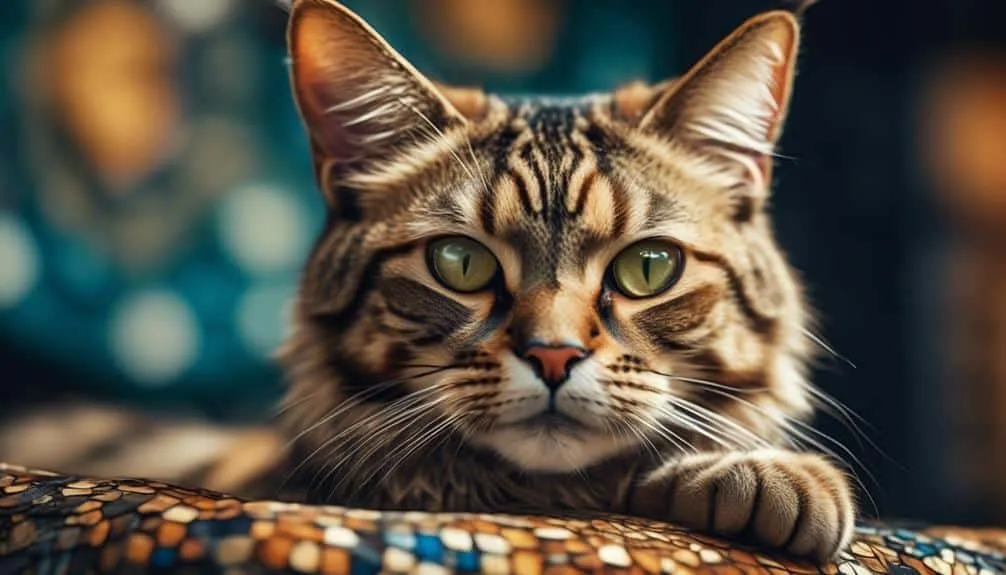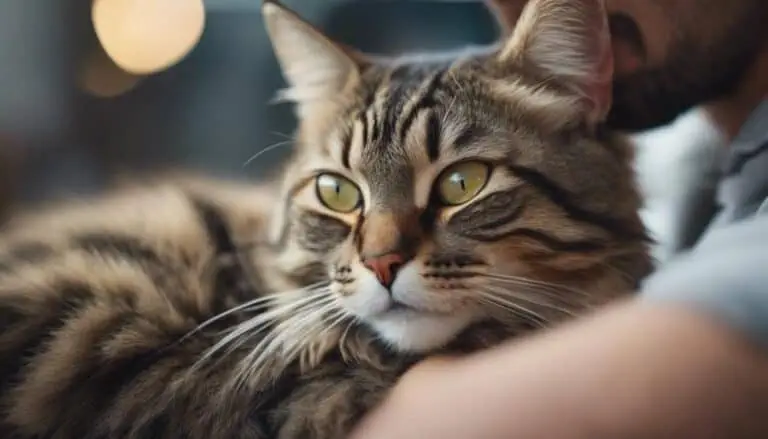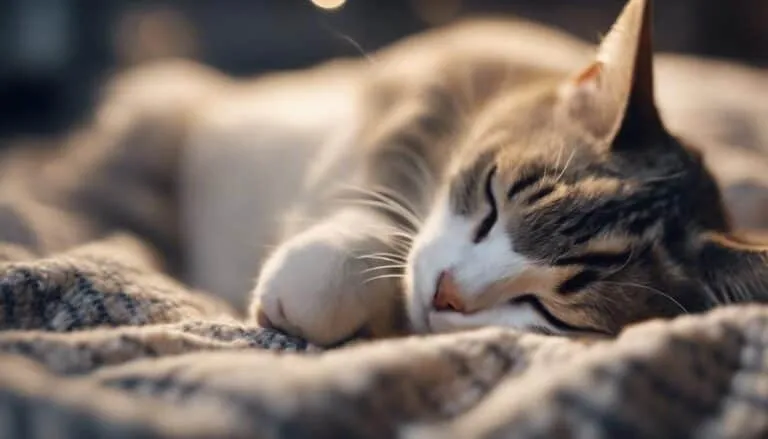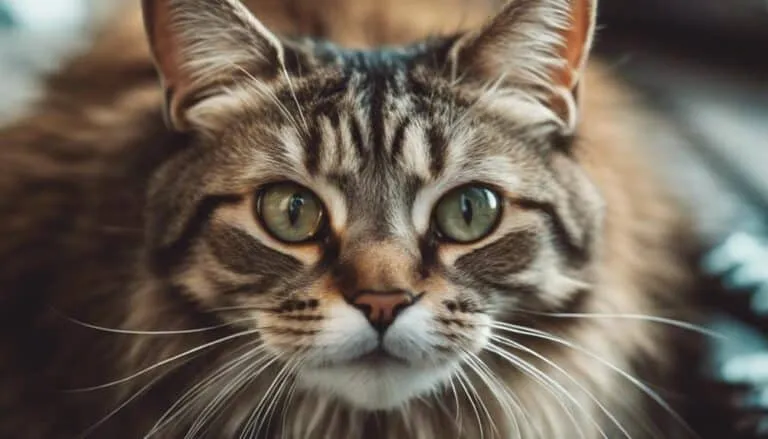The Best Fluffy Pancakes recipe you will fall in love with. Full of tips and tricks to help you make the best pancakes.

The world of feline welfare is a complex and fascinating one, filled with innovative strategies and practices aimed at ensuring the well-being of our furry friends. Among these practices, ear-tipping stands out as a particularly intriguing method that holds a wealth of secrets waiting to be uncovered.
What exactly is the significance of this surgical procedure? How does it contribute to the management of community cats? And what can we learn from it to create a more harmonious coexistence between humans and these enigmatic creatures?
In this discussion, we will explore the hidden truths behind ear-tipped cats, unraveling the mysteries that lie beneath their distinctive ear markings. Prepare to be captivated by the untold stories and profound impact of this seemingly simple yet profoundly significant practice.
Key Takeaways
- Ear tipping is a surgical procedure done during spaying or neutering of cats in TNR programs, involving the removal of a portion of the ear.
- Ear tipping is a safe and painless procedure that helps identify cats that have been trapped, neutered, and released, preventing unnecessary stress and re-trapping.
- TNR programs, including ear tipping, contribute to the control of the cat population and reduce nuisance behaviors associated with unneutered cats.
- TNR programs promote the overall well-being of community cats by ensuring they are spayed or neutered, and cats with tipped ears can still be adopted in suitable situations.
Understanding Ear-Tipping in TNR Programs
Ear-tipping is a surgical procedure performed during Trap, Neuter, and Return (TNR) programs to effectively identify cats that have been spayed or neutered. It involves the removal of a small portion of the cat's ear, typically the tip, which is then shaped into a straight line or a notch.
This distinctive ear modification serves as a clear visual indicator that the cat has undergone the sterilization procedure. The technique used for ear tipping involves sedating the cat and using a surgical instrument to precisely remove the desired portion of the ear.
After the procedure, the cat's ear will heal relatively quickly, usually within a few weeks. The healing process involves the formation of a scab, which eventually falls off, leaving a flat, slightly rounded ear tip. This technique ensures that ear-tipped cats can be easily recognized as sterilized, preventing unnecessary re-trapping and reducing stress for the animals.
Identifying Community Cats Through Ear Tipping
The practice of ear-tipping serves as a valuable method for identifying community cats that have undergone the Trap, Neuter, and Return (TNR) procedure. Ear-tipping involves the removal of a small portion of the cat's ear while they are sedated for spaying or neutering. This surgical procedure is a mandatory part of TNR programs and helps to ensure that trapped cats have been sterilized and released.
Ear-tipping has several implications for community cat behavior. It helps to prevent unnecessary stress by signaling that a cat has already been fixed, reducing the likelihood of re-trapping. Additionally, it aids animal control officers in distinguishing between treated cats and intact ones.
However, implementing ear-tipping programs in rural areas can present challenges. Limited access to veterinary services and lower community awareness can make it difficult to reach and effectively identify community cats in these areas.
Benefits of Ear Tipping for Feral and Stray Cats
Ear-tipped cats experience several significant benefits as a result of the ear-tipping procedure.
One of the primary advantages is reducing stress for feral and stray cats. These cats are often fearful of humans and may run away when approached. Ear tipping helps to identify cats that have already been trapped, neutered, and released, ensuring they are not re-trapped and subjected to unnecessary stress.
Additionally, ear tipping allows animal control officers to differentiate between treated cats and intact ones, facilitating more efficient management of the feline population.
Furthermore, ear tipping promotes community engagement by helping to identify new cats in the community. This enables individuals and organizations involved in cat welfare to provide proper care and prevent unnecessary medical procedures, ultimately contributing to the well-being of feral and stray cats.
Differentiating Treated Cats From Intact Ones
Differentiating cats that have undergone spaying or neutering from those that remain intact is crucial for effective population management and the welfare of community cats. To achieve this, treatment verification is essential.
Ear-tipping, a widely used method in Trap, Neuter, and Return (TNR) programs, serves as a reliable indicator of a cat's sterilization status. By removing a small portion of the ear, it provides a clear visual identification that the cat has been treated. This helps to minimize re-trapping and unnecessary stress for the cats.
Animal control officers can easily differentiate between treated and intact cats, allowing for more accurate population monitoring. Additionally, ear-tipping aids in identifying newly-introduced cats in the community, ensuring they receive proper care.
Ear Tipping: A Tool for Monitoring the Cat Population
Ear tipping serves as a valuable tool for monitoring and managing the population of community cats. Tracking feral cat colonies is essential for understanding and addressing the challenges associated with these populations.
Ear tipping plays a crucial role in community cat management by providing a visible and permanent mark that indicates a cat has been trapped, neutered, and released. This identification method helps prevent unnecessary trapping and stress for the cats, as well as assists animal control officers in distinguishing between treated cats and intact ones.
By easily identifying new cats in the community, ear tipping ensures that they receive proper care and prevents unnecessary medical procedures.
The Role of TNR Programs in Cat Population Control
TNR programs play a vital role in effectively controlling the cat population through humane and sustainable methods. These programs have been proven to be effective in reducing the number of feral and stray cats in communities.
Here are some key points regarding the effectiveness of TNR programs and public perception of them:
- TNR programs have been shown to be successful in stabilizing and reducing the cat population by ensuring that cats are spayed or neutered.
- Studies have demonstrated that TNR programs lead to a decline in the number of cats entering animal shelters and a decrease in euthanasia rates.
- Public perception of TNR programs has generally been positive, with many people recognizing the importance of these programs in addressing the issue of cat overpopulation.
- TNR programs not only control the cat population but also improve the overall welfare of community cats by preventing the spread of diseases and reducing mating behaviors.
- Continued support and promotion of TNR programs are crucial to maintaining their effectiveness and ensuring the well-being of both cats and communities.
Enhancing the Well-Being of Community Cats Through TNR
How can Trap, Neuter, and Return (TNR) programs enhance the well-being of community cats?
TNR programs play a crucial role in promoting the well-being of community cats by addressing population control and reducing nuisance behaviors.
One key aspect of TNR programs is promoting community involvement. Engaging residents in the trapping and caretaking of community cats fosters a sense of responsibility and compassion towards these animals. This involvement ensures the long-term success of TNR programs by creating a sustainable network of caregivers who can monitor and provide ongoing care for the cats.
Additionally, TNR programs contribute to the well-being of community cats by ensuring they are spayed or neutered. This not only prevents the birth of more kittens but also reduces the risk of certain health issues, such as reproductive cancers and fighting-related injuries.
Promoting TNR Programs for Cat and Community Welfare
Community involvement and support are essential for the success and advancement of Trap, Neuter, and Return (TNR) programs, ensuring the welfare of both cats and the community.
To promote TNR programs for cat and community welfare, the following strategies can be implemented:
- Implementing TNR programs in urban areas: By focusing efforts on areas with high populations of community cats, the impact of TNR programs can be maximized.
- Educating communities about the benefits of TNR programs: Informing residents about the positive outcomes of TNR, such as reducing nuisance behaviors and controlling the cat population, can help garner support and participation.
- Collaboration with local organizations: Partnering with animal shelters, veterinary clinics, and community groups can enhance the reach and effectiveness of TNR programs.
- Providing resources and training: Offering educational materials and training sessions on trapping techniques, cat care, and the importance of TNR can empower community members to actively participate.
- Celebrating success stories: Highlighting successful TNR outcomes and showcasing the positive impact on both cats and the community can inspire others to get involved.
Conclusion
In conclusion, ear-tipping is a valuable practice in TNR programs that benefits both community cats and the communities they reside in. It serves as a visual indicator of a cat's participation in the program, helping to identify fixed cats and alleviate concerns about additional litters.
Furthermore, TNR programs play a crucial role in controlling the cat population and promoting the well-being of community cats. By embracing these practices, we can foster a harmonious coexistence between humans and feline companions, ultimately benefiting all parties involved.








